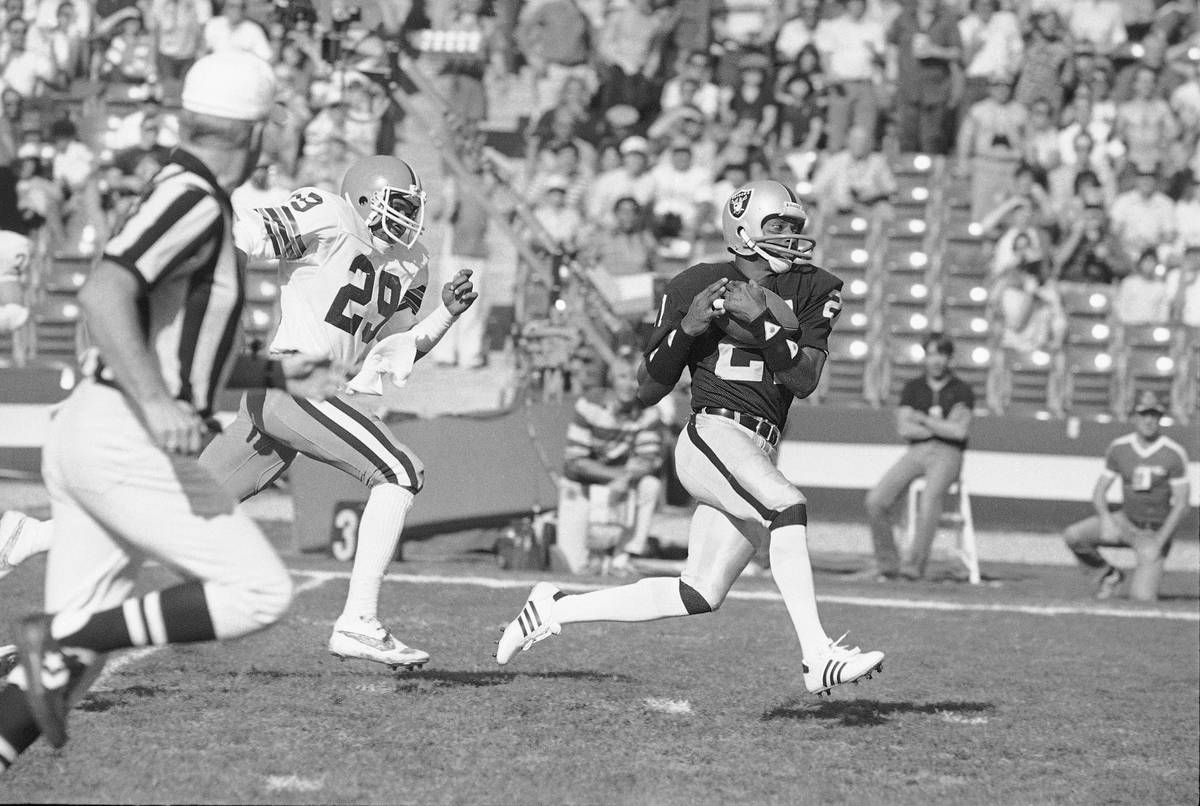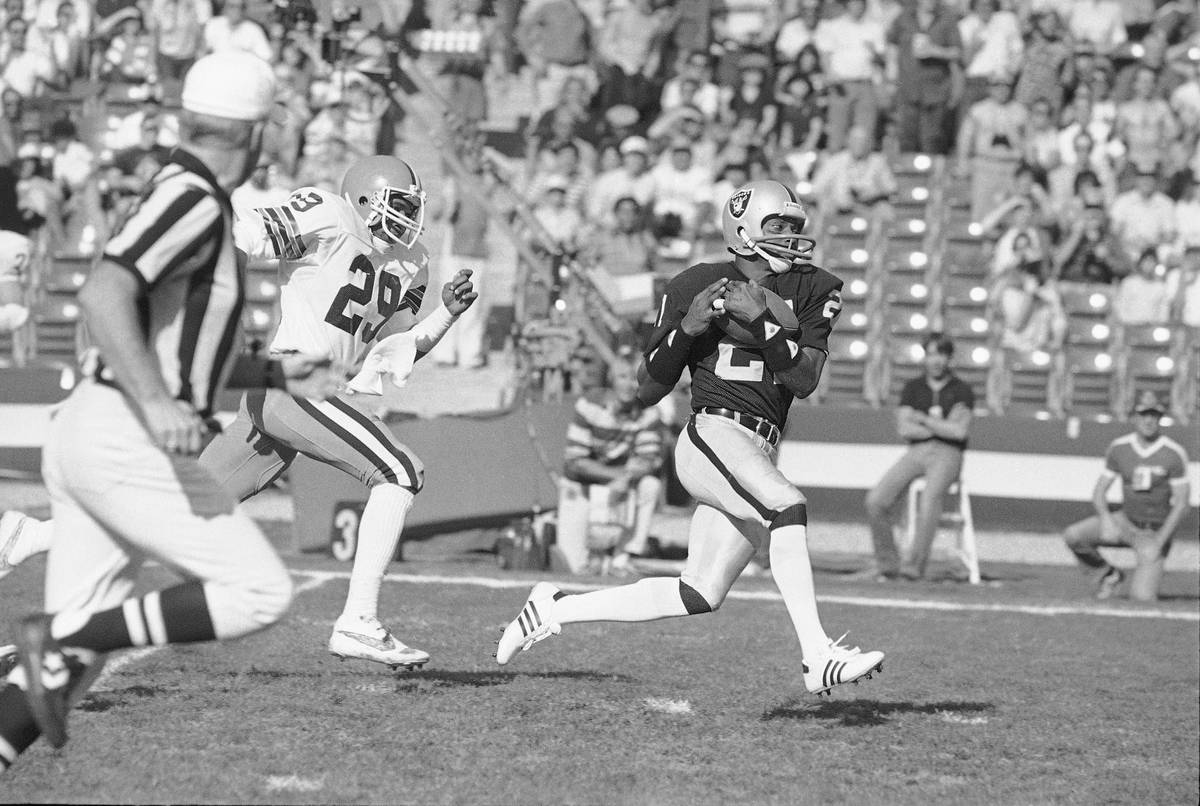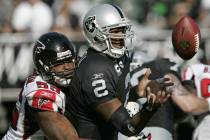Cliff Branch, the Raiders’ long-ball threat
Editor’s note: This is part of an occasional series acquainting fans with the Raiders’ illustrious 60-year history as the team moves to Las Vegas for the 2020 season.
Pressed to describe the speed and fluidity of wide receiver Cliff Branch, Raiders owner Al Davis explained to New York Times columnist Dave Anderson that it seemed more a matter of wings than legs.
“With him it’s not running, it’s flying,” Davis told the Anderson in 1974.
Davis was speaking figuratively, of course. But the world-class speed Branch brought to football would serve the rail-thin 5-foot-11, 170-pounder well over a 14-year Raiders career. He played on three Super Bowl championship teams, participated in four Pro Bowls and finished with 501 receptions for 8,685 yards while averaging 17.3 yards per reception.
In the rough and tumble world of football in which giant men can inflict great pain, Branch was able to outrun all that physicality to become one of the most durable players in the sport..
“Everyone talked about the big bad Raiders,” John Madden, the team’s head coach from 1969 to 1978, once said in an interview with NFL Films, but Branch “was so skinny, his back pockets would fight when he walked.”
His speed completely negated all that.
All 67 of his touchdowns came via the pass, and he led the NFL in that category in 1974 and 1976. He is third on the Raiders’ receiving yards list, trailing only Tim Brown and Fred Biletnikoff.
Catching balls from Raiders legends Jim Plunkett, Daryle Lamonica and Kenny Stabler, his incredible speed was the perfect fit in Davis’ vertical passing game, which was designed to stretch the field and beat teams over the top.
Davis was a believer in the long ball, and two of the main requirements to make it go were big-armed quarterbacks and wide receivers with breathtaking speed. Branch, a native of Houston, Texas, and a star on the University of Colorado football and track teams, brought the necessary speed. The 9.2 100-yard dash he once posted was all the proof needed.
“I was a football player who also ran track,” he told the New York Times in 1974. “The difference between being a sprinter and a wide receiver is learning to control your speed when you have to make a cut in running a pattern.”
Branch, as Davis so eloquently put it, could fly. And in 1972 the Raiders drafted him in the fourth round.
The NFL would soon find out how dangerous Branch could be when he turned on the jets.
“When you were across from him, there was fear there,” former 49ers and Raiders safety Ronnie Lott once said in a video promoting Branch’s Hall of Fame candidacy. And not just in the regular season.
Branch was phenomenal in the postseason, accumulating 1,289 receiving yards and helping the Raiders win Super Bowls after the 1976, 1980 and 1983 seasons
In 1983, at age 35, Branch tied the NFL record with a 99-yard touchdown catch in a regular-season game, gathering in a pass from Plunkett against the Redskins in Washington and outrunning their secondary.
But while the numbers suggest Hall of Fame consideration, the closest Branch got to induction was as a semifinalist in 2004 and 2010.
Branch passed away last year at the age of 71. His Hall of Fame hopes continue.
“All my peers that I played against and that are in the Hall of Fame, they tell me that I deserve to be in the Hall of Fame,” he told the Raiders’ website shortly before his death. “It’s the crowning glory, just like getting a Super Bowl ring.”
Contact Vincent Bonsignore at vbonsignore@reviewjournal.com. Follow @VinnyBonsignore onTwitter.






























